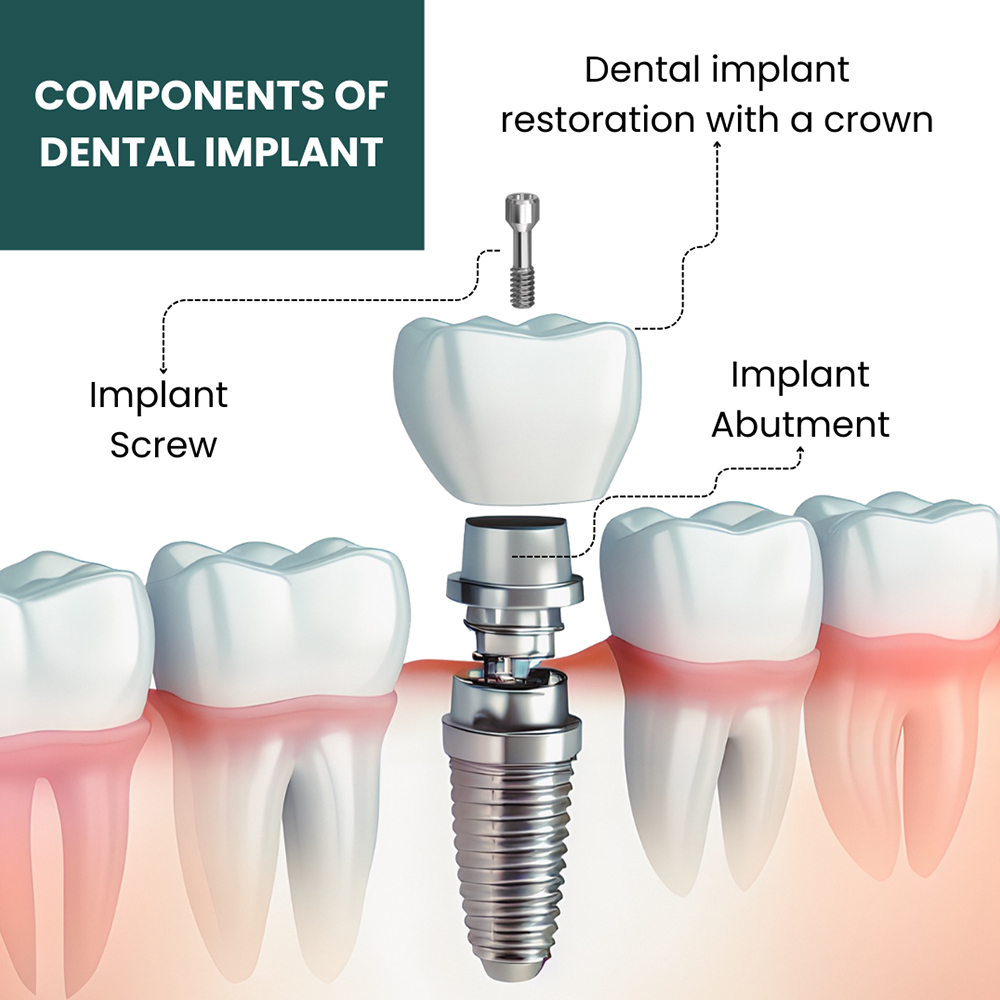Some Known Incorrect Statements About Dental Implants
Little Known Facts About Dental Implants.
Table of ContentsEverything about Dental ImplantsNot known Details About Dental Implants Some Known Incorrect Statements About Dental Implants 3 Easy Facts About Dental Implants Explained
are medical tools surgically implanted into the jaw to restore a person's ability to eat or their appearance. They supply support for man-made (fake) teeth, such as crowns, bridges, or dentures. When a tooth is shed as a result of injury or illness, a person can experience difficulties such as rapid bone loss, faulty speech, or modifications to eating patterns that cause pain.
Framework of The Dental Implant System picking oral implants, speak with your dental service provider about the potential benefits and risks, and whether you are a candidate for the treatment. Things to consider: Your general health is an essential consider establishing whether you are a great candidate for oral implants, the length of time it will certainly take to heal, and for how long the implant may remain in location.
Smoking may impact the healing procedure and lower the long-term success of the dental implant. The healing process for the dental implant body might take several months or longer, during which time you typically have a momentary abutment in place of the tooth. the oral implant procedure: Very carefully follow the dental health instructions provided to you by your oral supplier.
9 Simple Techniques For Dental Implants
Implant failing can result in the need for one more operation to deal with or replace the dental implant system. Recovers the capacity to eat Brings back cosmetic look Assists keep the jawbone from shrinking because of bone loss Preserves the health of the bordering bone and gum tissues Aids maintain nearby (nearby) teeth stable Improves quality of life Damages to bordering all-natural teeth throughout dental implant positioning Injury to the surrounding tissues during surgery, such as sinus perforation Injury throughout surgical procedure (for instance, fracture of bordering jawbone) Poor feature, such as seeming like the teeth do not bite together normally A feeling that the tooth hangs or turning in area resulting from an abutment screw loosening Implant body failing (looseness of the dental implant body) as a result of systemic infection, which may be a lot more most likely in clients with uncontrolled diabetes due to regional infection in bone and gum tissues sustaining the dental implant body because of postponed recovery, which might be more most likely in individuals that smoke Problem cleaning the periodontals around the dental implant, leading to bad oral health Neglected gum disease Post-surgical pins and needles due to nerve impingement or damage Always inform healthcare providers and imaging specialists that you have oral implants prior to any magnetic vibration imaging (MRI) or x-ray procedures.
FDA is not knowledgeable about any kind of unfavorable occasions reported for MRI or my link x-ray procedures with oral implants. Dental implants systems are normally made of products that comply with worldwide agreement standards of the International Organization for Standardization (ISO) or ASTM International. These standards have details of what makes a safe material.
Dental implant systems are evaluated according to international consensus requirements. Biocompatibility testing, to show that bodily contact with the gadget does not trigger problems like irritation or sensitive response, is component of the analysis that assists ensure the products in the oral implant system are risk-free and do not cause adverse effects when implanted in individuals.

About Dental Implants
Some people are not eligible for dental implant surgical procedure. It is for dental cosmetic surgeons to operate on individuals with: severe illnessuncontrollable metabolic diseasebone or soft cells condition or infectionIf these concerns are solved, a person can have the surgical treatment. Dental Implants. In, oral surgeons abstain from operating on people with: If people with any of the above undergo dental implant surgery, there is a higher risk of the implant falling short
Some individuals have a jawbone irregularity that stops adequate bone for a dental implant from creating. The cosmetic surgeon will certainly after that make use of a bone or bone replacement to fix and build up the area.
Dental implant surgical procedure is an individualized procedure. Provide you time to heal. Attach the post and final crown, bridge or denture.
Next, your surgeon will very carefully place the oral implant right into your jaw. view publisher site Your specialist will rearrange your gum tissues and shut the cut with stitches (Dental Implants). If your dental implant is near the front of your mouth, your dental expert will certainly make a momentary tooth for you to use until you recover. This way, you will not have a space in your smile while you recover.
Get This Report on Dental Implants
Your supplier try this website can tell you what to expect in your scenario. Throughout the healing phase, your jawbone ought to fuse to the oral implant. This procedure, called osseointegration, is vital for security and lasting success. This process can take anywhere from 3 to 9 months. In many cases, it might take longer.
When your dental implant heals, your dental expert can attach the abutment (tiny connector post) and your last restoration (crown, bridge or denture). This usually takes about one hour to complete and might call for a 2nd small surgical treatment. You should not feel any type of pain during your oral implant procedure because your copyright will use medication to numb your gum tissues.